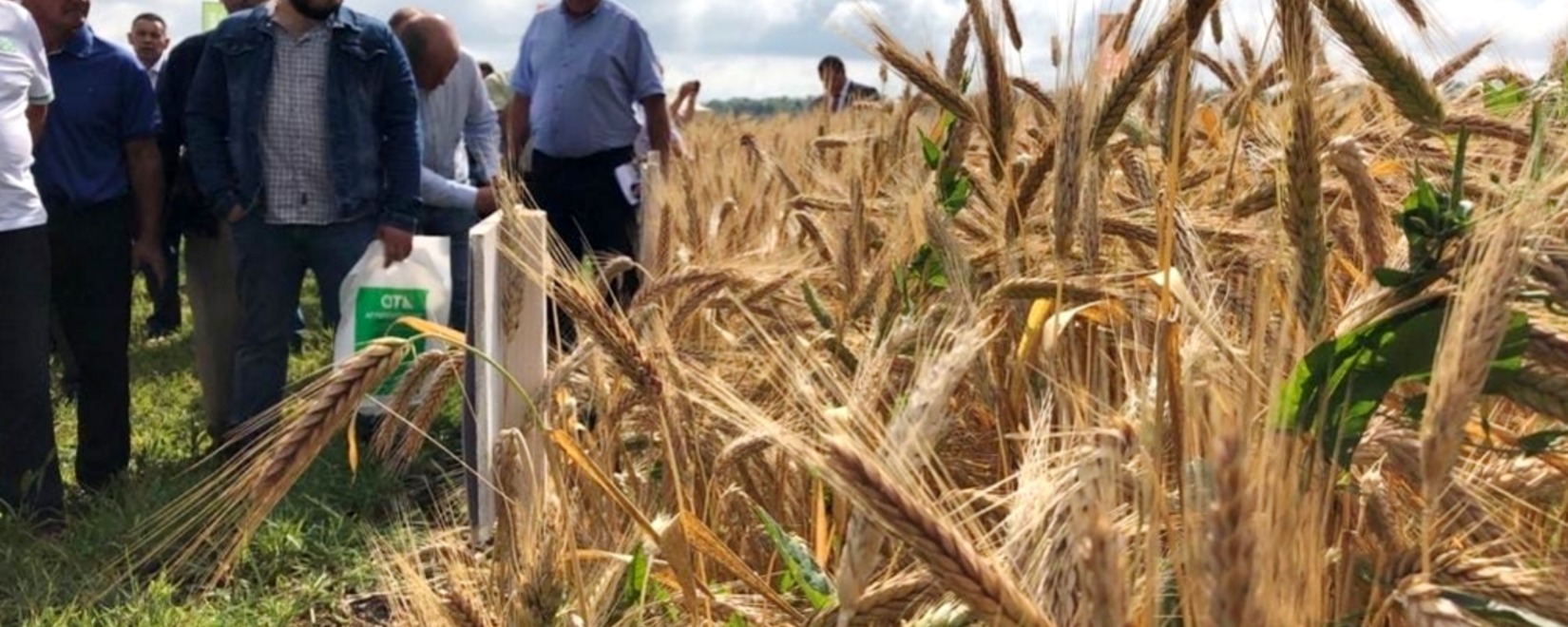In 2023, 7 new varieties of agricultural crops from Saratov breeders of the Federal State Budgetary Scientific Institution "Rossorgo" were added to the state register of breeding achievements permitted for use in the Russian Federation. Among them are grain sorghum varieties named "Prince" and "Culon," sugar sorghum named "Isolda," black pearl millet, pea variety named "Lada," spotted spurrey of the "Youth-40" variety, and pizmolistle facelia of the "Medunica" variety.
According to specialists from the Federal State Budgetary Scientific Institution "Rossorgo," these varieties will contribute to the increase in the efficiency of agricultural production and processing, strengthening the feed base for livestock farming, poultry farming, and beekeeping in the Saratov region and other regions. They are adapted to the harsh natural-climatic conditions of the Volga region and have a high yield potential.
"Culon" is an early-maturing variety of grain sorghum designed for use as grain, grain forage, silage, haylage, and monofeed. Grain yield can reach up to 5 tons per hectare, and green mass yield can reach up to 21 tons per hectare. The grain contains 10.8% protein. This variety is permitted for cultivation in the Ural region.
The early-maturing variety of grain sorghum "Prince" is also used for grain production, grain forage, silage, haylage, and monofeed. The vegetative period until heading maturity is 81-84 days, and until full grain maturity is 99-105 days. The average grain yield ranges from 3.4 to 5.3 tons per hectare, and green mass yield ranges from 15 to 21 tons per hectare. The grain contains 9.7% protein. This variety is approved for use in the Central-Chernozem, Middle Volga, Lower Volga, and Ural regions.
The medium-early variety of sugar sorghum "Isolda" is intended for use as green fodder, haylage, and silage. It stands out for its intense initial growth and taller height at harvest, as well as higher seed and green mass productivity compared to standard varieties. Green mass yield ranges from 33.0 to 40.2 tons per hectare. Stalks contain 16.7% to 19.1% sugars. Seed productivity ranges from 3.43 to 5.80 tons per hectare. This variety is recommended for use in the Central-Chernozem and Ural regions.
The early-maturing variety of black pearl millet has dark seeds with increased protein content of up to 25.0%. The vegetative period lasts 80-86 days. Seed yield ranges from 2.2 to 2.6 tons per hectare. The weight of 1,000 seeds is 148-153 grams. This variety is resistant to lodging and seed shattering. It is promising for both food and feed use and is permitted for use in the North Caucasus region.
The mid-early variety of pea named "Lada" plays an important role in feed production, providing agricultural animals with quality succulent and rough feeds. It can be used as green fodder, hay, and haylage. The variety can yield up to 4 crops of green mass with high quality. Aboveground mass yield ranges from 28.0 to 32.0 tons per hectare. The variety is characterized by drought tolerance, heat tolerance, and lodging resistance. It is approved for use in the Lower Volga region.
The spotted spurrey variety "Youth-40" is used for oil extraction by pressing and extraction. The plants have a vegetative period of 90-95 days and reach a height of 105-110 centimeters. The flowers are purple, and the seeds are dark with a fat content of 26.5%. The content of flavolignans in terms of silybin is 3.3%. This variety is suitable for mechanized cultivation and is approved for use in the Lower Volga region.
The pizmolistle facelia variety "Medunica" is an early-maturing option that can be used as a honey plant and a versatile cover crop. Green mass yield ranges from 18.0 to 19.0 tons per hectare, and seed yield ranges from 0.6 to 0.8 tons per hectare. This variety is characterized by large inflorescences, providing high nectar productivity. It is resistant to diseases and pests and is permitted for use in all regions.

 Trading platform
Trading platform 
 Monitoring
Monitoring  Express applications
Express applications 
 Fork Work
Fork Work 
 Service
Service  News
News  Directory
Directory 
